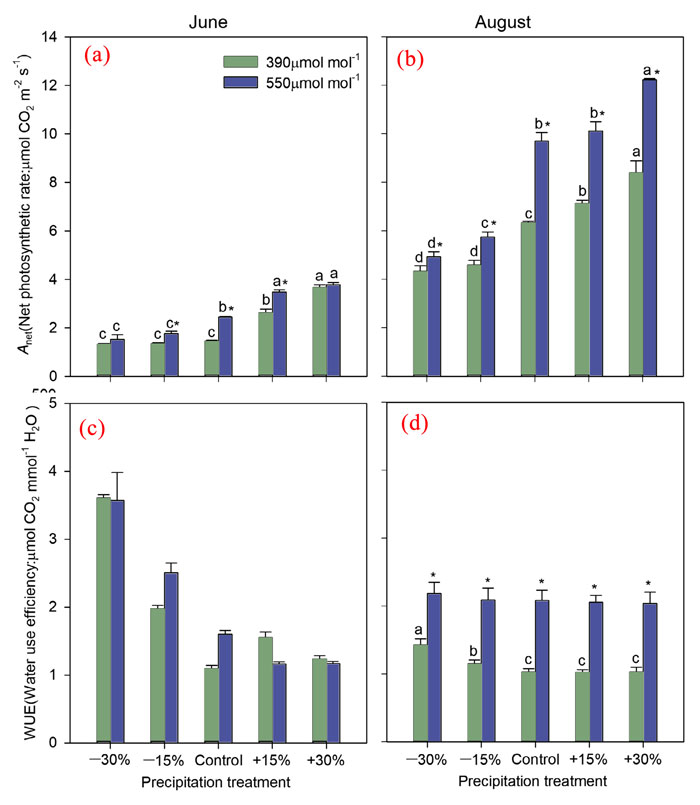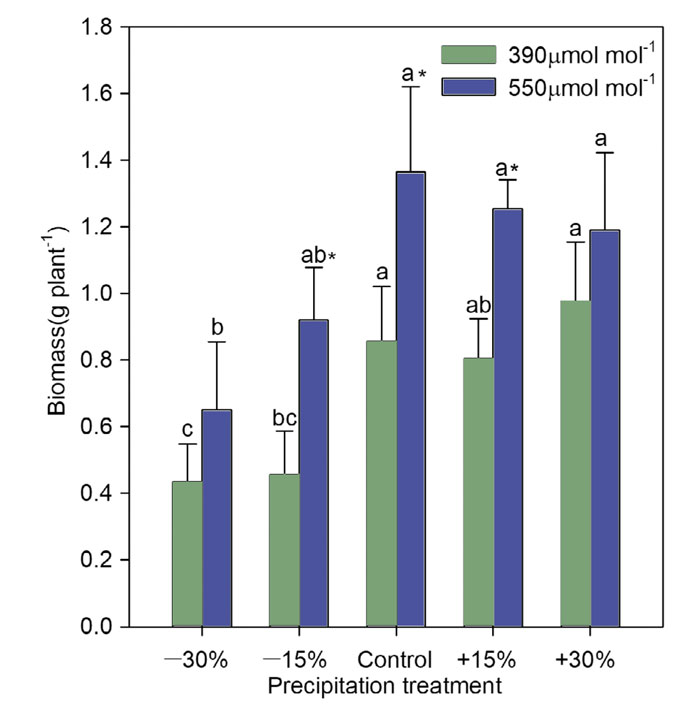| Tweet | Follow @co2science |
Paper Reviewed
Wang, H., Zhou, G., Jiang, Y., Shi, Y. and Xu, Z. 2019. Effects of elevated CO2 on Stipa baicalensis photosynthesis depend on precipitation and growth phase. Ecological Research 34: 790-801.
Stipa baicalensis is a C3 perennial bunch grass dominant throughout the Songnen Plain and Inner Mongolian Plateau of China. Its presence in this region is important for domestic livestock, which feed upon it thanks to its good palatability and high forage value. However, according to the research team of Wang et al. (2019), little is known how this grass species might respond to predicted changes in climate, stating that "studies in S. baicalensis response to both elevated CO2 and varying precipitation are rare." And thus this five-member research team went about to remedy this situation.
Working in an open-top chamber environment, Wang et al. subjected S. baicalensis samples to ambient (390 ppm) or elevated (550 ppm) levels of atmospheric CO2 and one of five precipitation regimes in an effort to determine the combined impacts of these two variables on S. baicalensis productivity, water use efficiency and biomass. The five precipitation regimes included a control, which was set to the 30-year monthly precipitation average for both June and August, and values that were 15% and 30% above and below the 30 year monthly averages for each of these two months. The results of their study are displayed graphically in the two figures below.
Figure 1 displays the ambient and elevated CO2 response to photosynthesis and plant water use efficiency for the five June and August precipitation treatments. As illustrated there, elevated CO2 raised plant net photosynthesis in every precipitation treatment in each month (from 3-70% in June and from 13-52% in August), with the greatest values for net photosynthesis being observed during the height of summer in August. Plant water use efficiency was significantly higher in August in all watering treatments under elevated CO2, whereas in June it was only higher in the control and -15% precipitation treatments, approximately equal in the -30% and +30% precipitation treatments, and lower in the +15% treatment, which relative differences observed between June and August may well have been impacted by plant age (grass cultivated in June were relatively young compared to that cultivated in August, which were completely mature).
With respect to the impacts of elevated CO2 on biomass, Figure 2 indicates this parameter was enhanced by approximately 48%, 100%, 58%, 53% and 21% under elevated CO2 conditions in the -30%, -15%, control, +15% and +30% precipitation treatments.
In light of all of the above findings, Wang et al. conclude that "the elevated CO2 concentration in the future might be beneficial to the growth of S. baicalensis," albeit the magnitude of that positive influence will be dependent on "precipitation conditions and the growth phase.

Figure 1. Changes of net photosynthetic rate (Anet; panels a and b) and water-use efficiency (WUE) (panels c and d) of Stipa baicalensis grown under CO2 and precipitation treatments in June and August. Data are means and SD (n = 3). Different lowercase letters indicate significant difference between different precipitation treatments within the same CO2 concentration, while * indicates significant difference between elevated and ambient CO2 level within the same precipitation (p < .05). Source: Wang et al. (2019).

Figure 2. Changes of plant biomass of Stipa baicalensis grown under CO2 and precipitation treatments. Data are means and SD (n = 3). Different lowercase letters indicate significant difference between different precipitation treatments within the same CO2 concentration, while * indicates significant difference between elevated and ambient CO2 level within the same precipitation (p < .05). Source: Wang et al. (2019).




